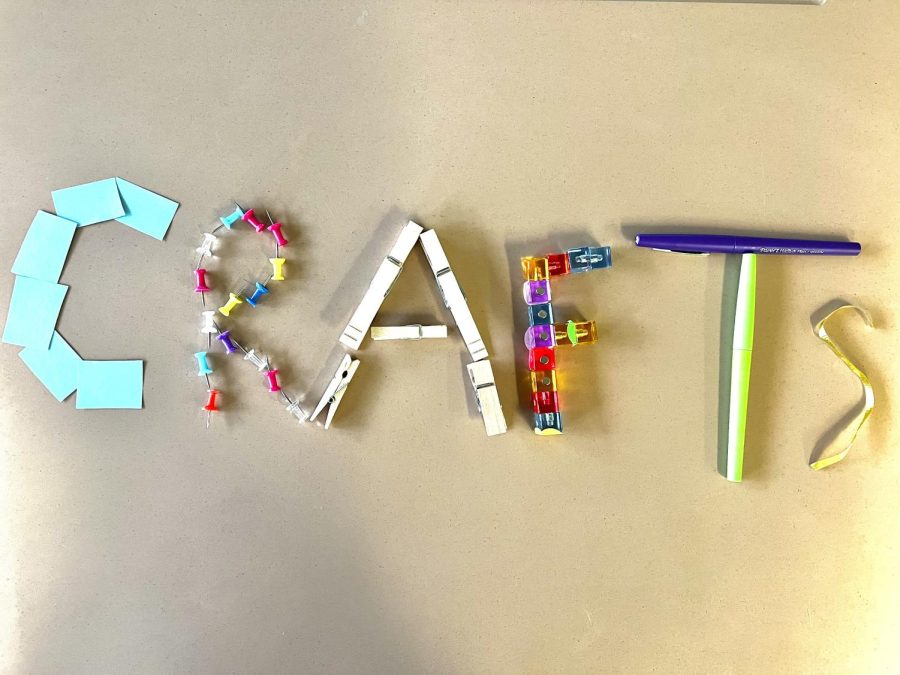Hobbyists grapple with costly crafts
As craft prices are on the rise, people resort to finding materials around the house.
Hobby broke– a phenomenon that happens when creative people try lots of different crafts, but then run out of money due to the high prices of materials.
This was especially prevalent over the last two years when everyone was looking for something to keep them busy at the beginning of the pandemic, or in their individual quarantines.
Freshman hobbyist Al Zoerb works with Rainbow Loom bracelets and dabbles in crochet. They explained why they are drawn to crafting.
“It’s a really easy way to express your creativity. Crafts can be complex or simple, and there’s a lot of room for customization. It’s an easy thing to pick up and just start,” Zoerb said.
They then shared their concerns with craft supply price hikes, especially as they relate to trends.
“A lot of times crafting supplies can be too expensive, especially if they’re marketed for a specific thing. Companies will mark up their prices when a particular craft gets more popular, because more people want to start,” Zoerb said.
Social media like TikTok and Pinterest are huge factors in the prices of products going up. Since a lot of people see the same videos at once, the demand for the crafting supply in question will increase dramatically in a very short time.
Another crocheter, sophomore Naomi Young, shared the problems she faces specifically in relation to crocheting.
“I think that the materials are too expensive. Some balls of yarn can cost upwards of 10 dollars, which can really add up if you’re making a larger project,” Young said.
Junior Sophie Martincic works on skate decks and wood burning. These unique hobbies are not immune to the steep prices of the crafting world. She explains that skate decks are particularly expensive to work on and while she believes that it’s worth it, she, too, shared her concerns with the prices.
“That being said, if you aren’t living in a middle class dual income home then yes, [crafts] are expensive,” Martincic said.
Although prices are high, some hobbyists have found ways around them. By upcycling materials, crafters have discovered ways to make their art accessible.
Senior Clarissa Sigale sculpts, paints, and does mostacilla beading, a traditional Colombian form of jewelry making. In order to combat being “hobby broke”, Sigale tries to find materials from around the house in order to conserve money.
“I just work with the cheap materials I have. I make sculptures by bending paper clips and wrapping them in tinfoil for the skeletons and all the materials for beading are pretty inexpensive,” Sigale said.
Not only is upcycling a great way to keep your pocket change, it is also what environmentalists recommend instead of recycling. According to Heal the Planet, when people recycle the need for production of new products doesn’t decrease, but when people upcycle demand decreases and in turn prices will go down. If those who can upcycle instead of buying new products do so, others might be able to afford the crafting prices.
Many people say that crafting is what they do to unwind, but the inaccessibility of the materials keeps them from being able to partake.


